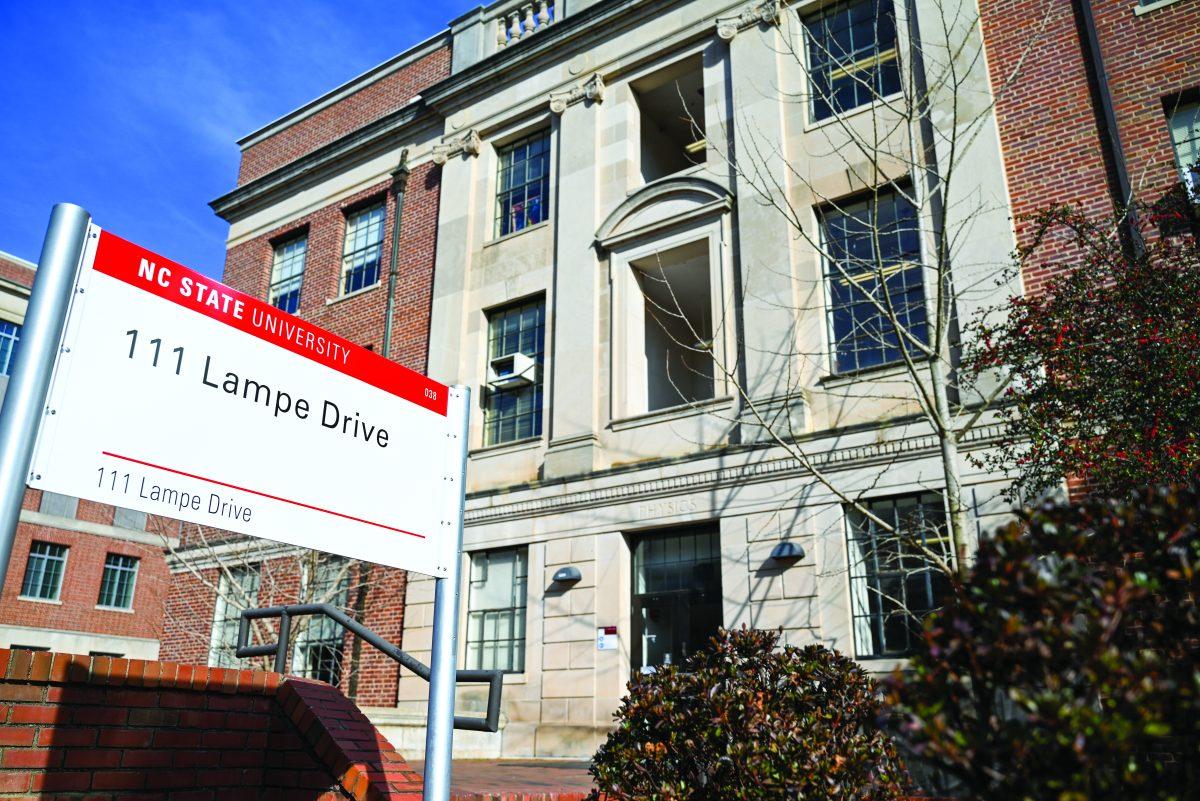On June 22, 2020, the NC State Board of Trustees voted to rename then-Daniels Hall, now 111 Lampe Drive, as a result of renewed discussion regarding racism in North Carolina and the nation as a whole. A system-wide petition created June 12, 2020, to pressure University leadership to change the names of buildings on all 17 UNC campuses, including NC State, was a driving force.
Voting unanimously, the Board removed the namesake dedicated to Josephus Daniels, one of NC State’s founding members, a 19th-century newspaper magnate and an influential and outspoken white supremacist.
Daniels used his influence and control at The News and Observer to promulgate Democratic Party rhetoric, particularly the implementation of Jim Crow and general white supremacy.
Daniels was also considered a leader in the Wilmington Massacre of 1898, where a mob lynched hundreds of African Americans, burned many Black-owned businesses and launched a successful coup d’etat of the newly-elected biracial Fusionist government in the largest city in North Carolina at the time.
During the Board of Trustees meeting regarding the issue, Chancellor Randy Woodson said the building was named for Daniels due to his pivotal role in founding NC State — Daniels was a member of the Watauga Club, which successfully chartered NC State University, then known as the North Carolina College of Agriculture and Mechanic Arts.
Melanie Flowers, the 2020-21 student body president, was a voting member on the Board of Trustees at the time.
“I think it might have been my first Trustee meeting,” Flowers said. “We’re all on Zoom, and that was one of the only actionable items on the agenda.”
Flowers said the vote met no resistance at the meeting and was a sign of progress from University leadership.
“The vote happened quickly and unanimously,” Flowers said. “There wasn’t any debate or disagreement on the matter.”
At the meeting, Woodson said Daniels’ values of white supremacy do not reflect the University’s values, and it didn’t serve the interests of the University to keep the name. Flowers said the chancellor spoke about his talks with the Daniels family on the removal of the name.
“The chancellor read a statement about the history of the building and expressed that the Daniels family supported the decision to take the name down,” Flowers said.
In the days before the Board of Trustees’s decision, a statue of Daniels across from the News and Observer building in Nash Square was also removed in downtown Raleigh, and Daniels Middle School was renamed to Oberlin Middle School with the blessing of the Daniels family.
Flowers said she was not sure whether the removal of the statue had a relationship with the renaming of 111 Lampe Drive, but instead attributed it to the renewed dialogue around racist figures within North Carolina.
“I don’t know if that influenced what was happening at NC State,” Flowers said. “But I think Josephus Daniels’ legacy coming into the spotlight during that summer likely influenced the acknowledgment of having a namesake on our campus and the need for it to be removed.”
The renaming of Daniels is part of a larger dialogue regarding the role of universities in upholding systemic racism and white supremacy, as well as the UNC System in particular. However, the decision to remove Daniels in particular was due to his larger role in the history of racism within North Carolina, Flowers added.
“The prominence of the name and legacy likely pointed to that being a name that was hard to look over,” Flowers said. “It was an unignorable name that we had on our building, and it needed to be rectified.”
Flowers said the student body was one of the largest forces asking for these changes in the naming of Daniels Hall.
“I think students were really a fierceful influence in making sure the University prioritized rectifying anything that was honoring people such as Josephus Daniels,” Flowers said.
Benjamin Westerhold, a fourth-year studying chemistry and philosophy, said that namesakes play an important role on campus and that the administration has to weigh both the will of the student populace as well as the acknowledgment of history in the individuals after whom buildings are named.
“It would be hard to say doing the right thing for the student populace would be a good idea because I don’t know to what extent that might sacrifice other things,” Westerhold said. “Clearly, if you only prioritize the historical meaning, people are going to be pretty pissed off.”
Justin Miazga, a third-year studying mechanical engineering, said he keeps up with controversies such as the renaming of Daniels Hall very little because it doesn’t affect his ability to study.
“I don’t keep up with too much of it,” Miazga said. “I’m here doing my school — as far as I’m concerned, I’m just here to do my job.”
Later in the summer of 2020, University administrators released a new policy to review building namesakes. The policy requires initiative from the chancellor, either by his own volition or as requested by the Board of Trustees, students or faculty.
The policy has not been used since its introduction, despite racist namesakes still being present on campus.








